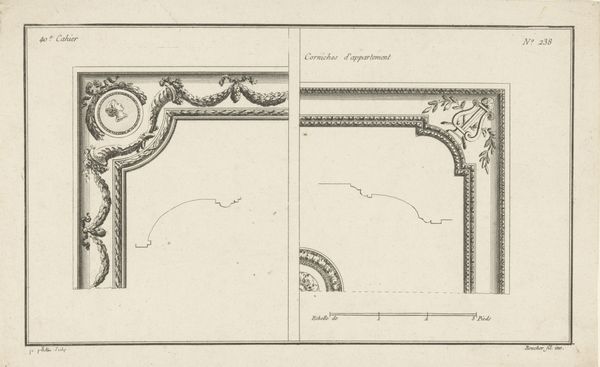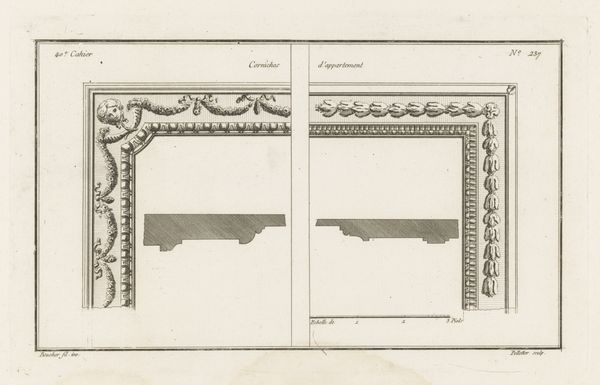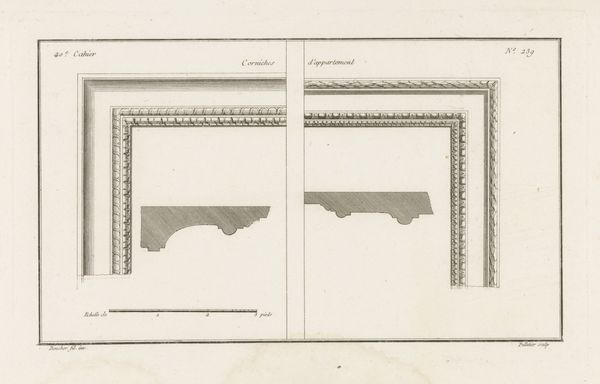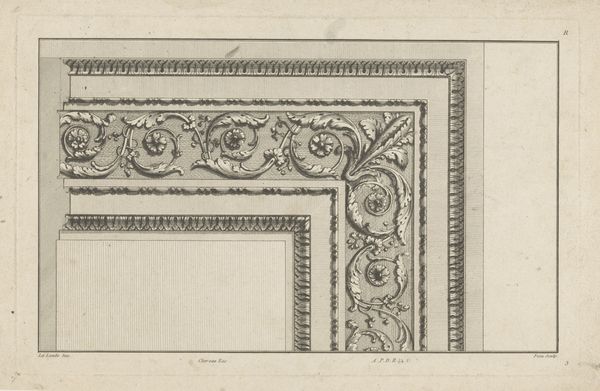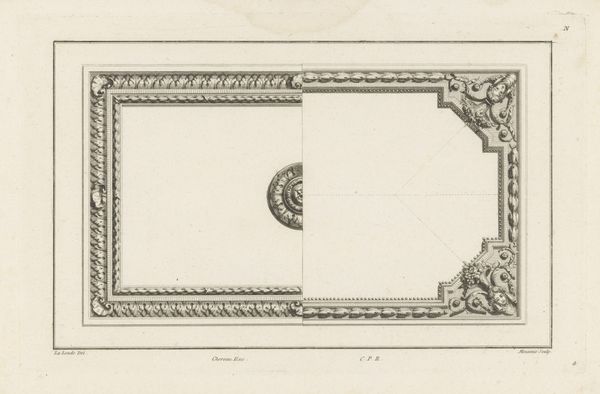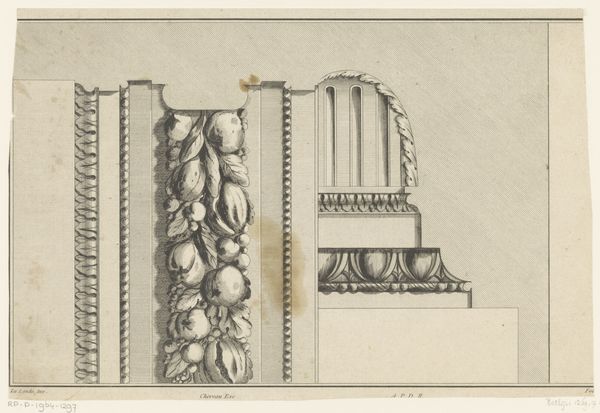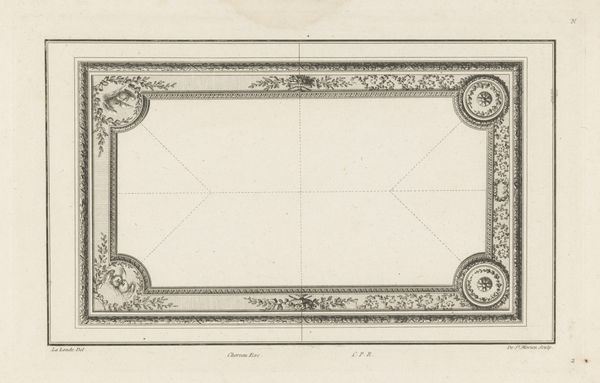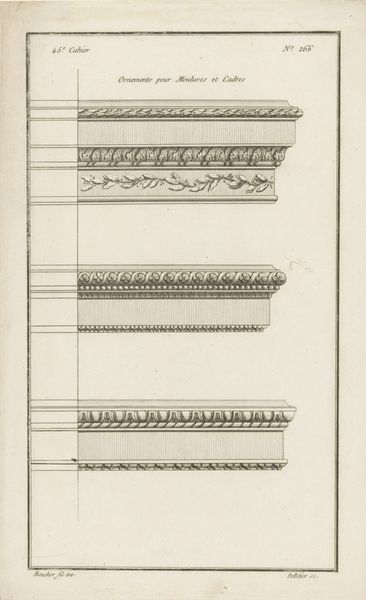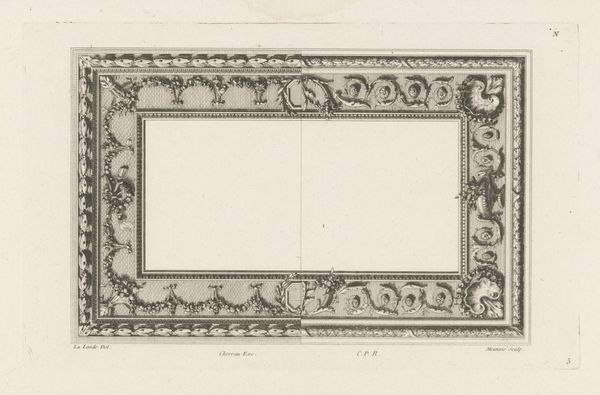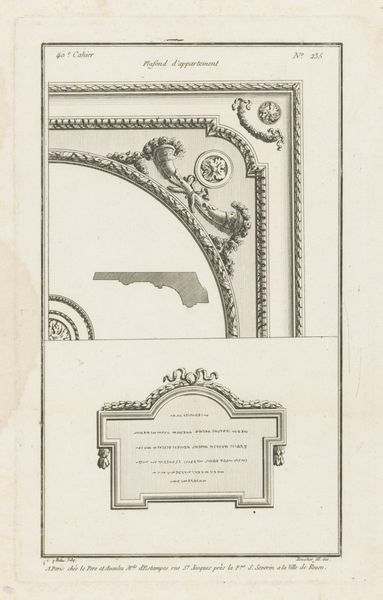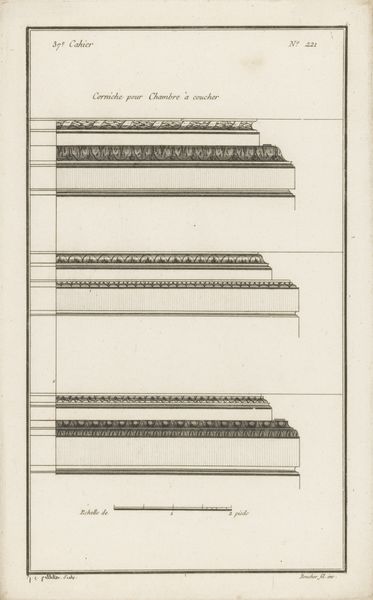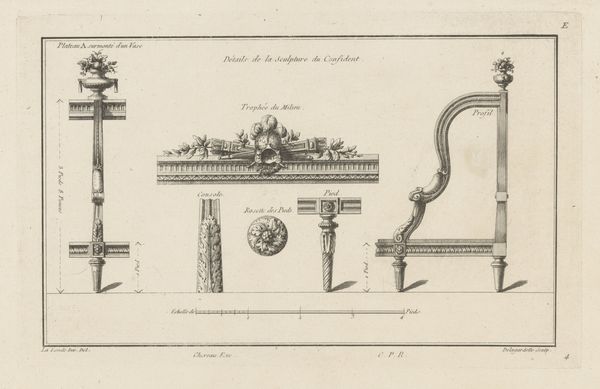
Dimensions: height 205 mm, width 330 mm
Copyright: Rijks Museum: Open Domain
This print of ceiling designs was created by Jean Pelletier, likely in the late 18th century. During this time, Pelletier, like many artists, was working under the influence of the Rococo movement, an aesthetic that privileged ornate and theatrical designs. Consider the visual language of the image: the geometric shapes, the symmetry, and the detailed rendering of the decorative elements. Note the contrast between the structured presentation and the elaborate, almost whimsical details of the designs themselves. The ceilings feature cherubic faces with cascading braids, interspersed with stylized foliage. What do these design choices convey about the values of the society for which these ceilings were intended? How does this aesthetic reflect or subvert notions of gender, class, and power? Designs such as these could only be commissioned by the wealthy, and stand as statements of status. Reflect on the historical context in which Pelletier was working, and how these designs embody both artistic expression and social identity.
Comments
No comments
Be the first to comment and join the conversation on the ultimate creative platform.
